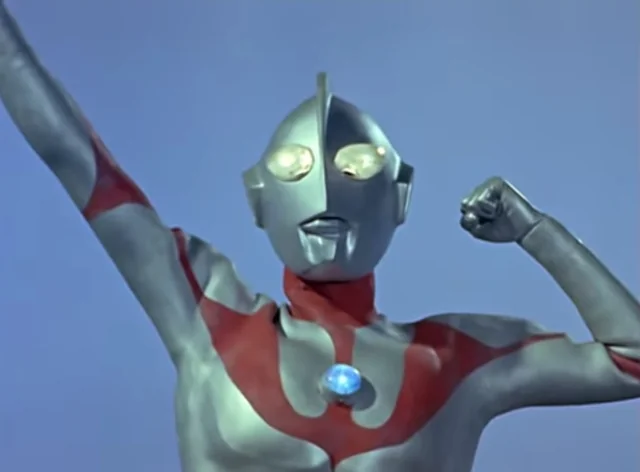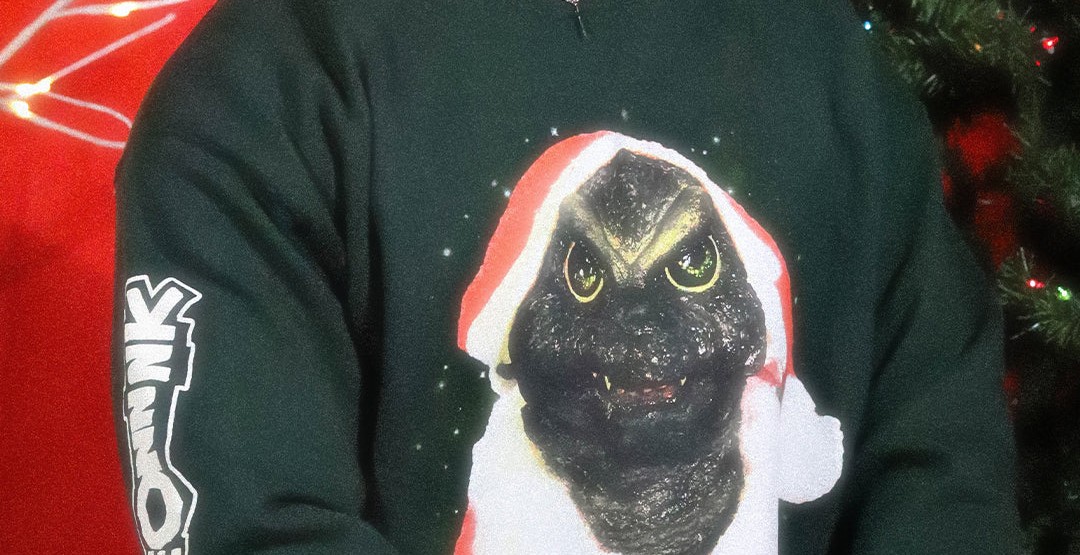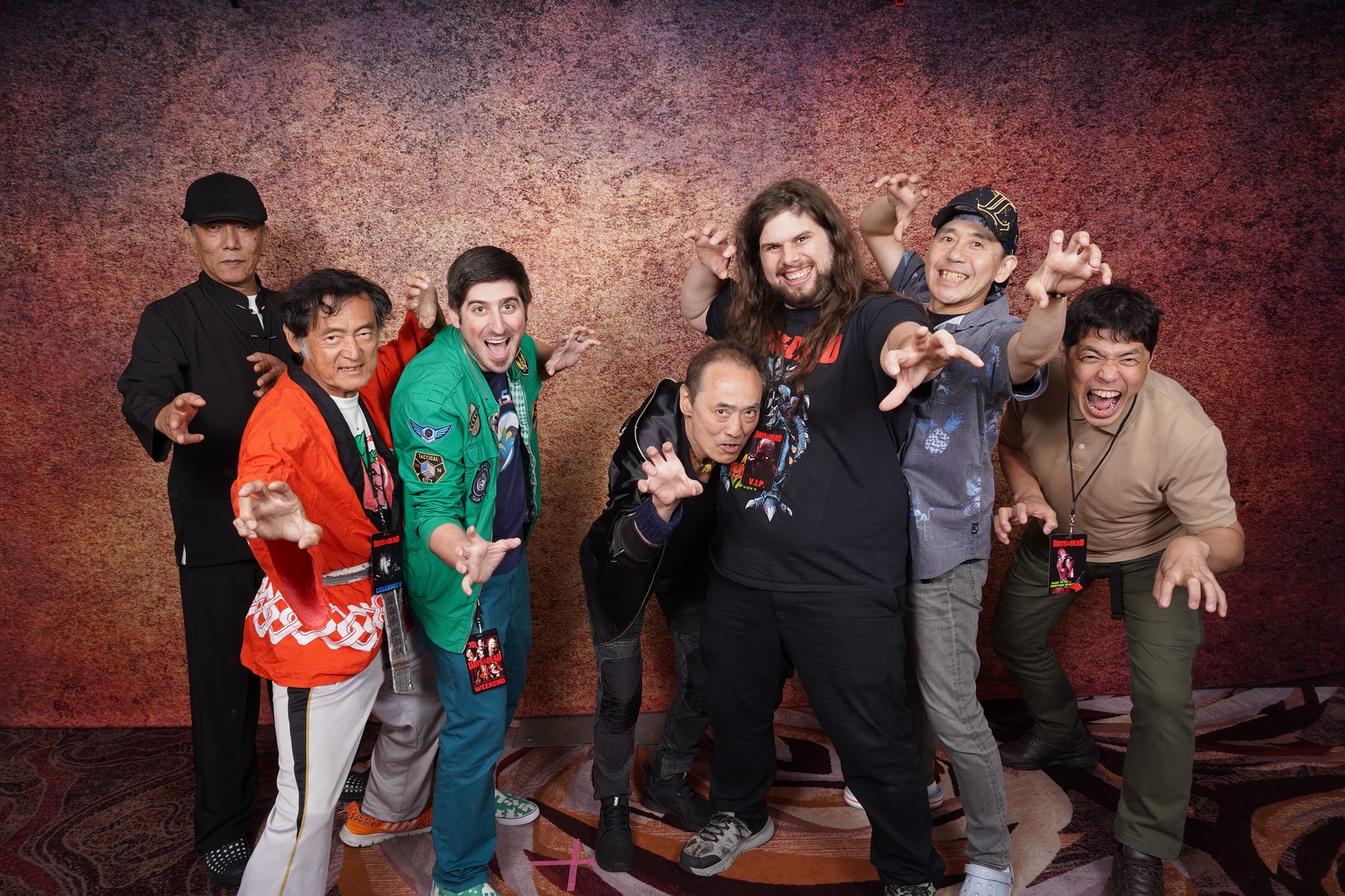What does the Ultraman franchise actually have to say about us? It’s a question you will likely ask more frequently if you peruse this lengthy multimedia series in chronological order. Like its Sci-Fi contemporaries in “Star Trek” and “The Outer Limits”, the franchise has seen its fair share of social commentary across its 60-year reign over Japanese television. However, having now become the largest TV franchise of all time, it can be hard to look at it as a single piece with a single driving idea behind it. Yet, I certainly argue that if there is a thematic throughline in the Ultra Series, then it’s an unbroken sense of hope for mankind and our position as a socially dominant species on this little planet.

This can be seen as early as the original “Ultraman” series which ran through 1966-67 for 39 episodes. Despite being largely aimed at a young audience, it saw its fair share of more serious episodes. One in particular that has always stood out to me as one of the highlights of the show is episode 23 “My Home is Earth”.
The episode is the debut of one of the more tragic monsters in the hero’s rogue’s gallery – that being Jamilla. It’s worth noting that the episode itself was directed by Akio Jissoji, a name that will come up a lot in this essay – perhaps save for series creator Eiji Tsuburaya himself, Jissoji was the biggest architect of this franchise. In this episode, we are given a melancholic story that sees its titular monster lay siege to Japan. It is only later that the characters of the series – a group tasked with destroying monsters, learn that Jamilla is in actuality, an astronaut sent to space and irrevocably transformed into his current monstrous persona, and that his rampage is in fact an intelligently conceived mission of revenge upon those who want to cover up his accident.
The episode not only provides a little bit of tonal whiplash compared to the lighter fare of earlier outings, but a deeply interesting and emotional questioning of the human condition. Though the brief runtime of an episode does not always permit a great degree of depth for its themes or story, questions are raised here, ones pertaining to the lines between man and monster, and whether or not the crew can go through with their mission, knowing that the monster they are shooting at was once a scientist like them – a human being angered by a world that would deliberately forget him. It’s telling that Jamilla is one of very few kaiju from the original series who has not become a recurring antagonist in the wider franchise. Whereas Gomora and Neronga are fixtures of series iconography at this point, almost as inseparable as the heroes themselves- Jamilla has remained in a unique position. He is far from forgotten, being a classic fan-favourite among viewers, but one whose tragedy and specific story requirements relegate him to being quietly and respectfully retired.
Episode 23 of Ultraman poses several thematic questions that the franchise as a whole is still battling with to this day. In Jamilla, we see the blurring of lines between mankind and monsters, and in the faceless politics of the UN, we see the darker side of humanity that wants to cover up its own shortcomings. These are both ideas that the Ultraman series, and Jissoji in particular would return to time and time again, both in the classic ‘66 show and in subsequent seasons.
Perhaps the series that tackled these issues the most head-on was the direct follow-up to the original series, Ultraseven. Ultraseven ran from 1967-68 and was aimed at a slightly older audience, allowing for greater leeway in discussing mature subjects. The series sought to differentiate itself from Ultraman by focussing far more on the sci-fi elements of the series, making the aliens (who only occasionally appeared as enemies in Ultraman) the focus of the show, with a Men in Black-Esque defence team being the protagonists of the series. Another big difference between the two shows was that, whereas in Ultraman the titular hero was an alien soldier who was forced to symbolically bind himself to a human host, Ultraseven and protagonist Dan Moroboshi are one and the same, Dan being a human disguise that allows the hero to work alongside mankind.
This opens a whole new dimension of storytelling, as across the series Dan would find himself facing both the best and the worst humanity has to offer, allowing such themes to be explored from an outsider perspective.

Perhaps better than any other episode, episode 26 “Super Weapon R1” does a phenomenal job of confronting more mature subject matter pertaining to humanity. In the episode, the crew test out a new nuclear weapon, a planet-destroying superbomb that gives the episode its namesake. Naturally, the team test it out on a planet they believe to be a desolate wasteland without an ounce of life on it. However, the planet is of course not uninhabited. The sole remaining entity, a now-mutated nuclear bird monster dubbed “Star Bem Gyeron” immediately makes a B-line for Earth, with vengeance in its mind. Landing in Japan, the monster begins a rampage, with the team forced to keep it away from inhabited areas due to its highly radioactive body.
In the episode, we see Dan go through a crisis of morality, angered by the use of nuclear weapons, clearly stating to the rest of the team that such devices only beget further destruction. It’s here that we see Dan at his lowest in the series. Sure, there are episodes where he goes through far greater physical abuse at the hands of his enemies, but here is the closest we get to seeing him question his faith in humanity. The episode leaves things on a fairly morose note, with Gyeron killed by Ultraseven, the bloody battle contrasted with its scenic location, and Dan having to force himself to continue fighting for the sake of mankind. It’s also worth noting that the field where Gyeron lands in directly recalls the devastated Urakami cathedral in post-war Nagasaki.
It’s a bleak episode, one wherein the absolute horror of nuclear devastation outmatches the monster.

“That’s a sad marathon that you keep running as you cough up blood” – Dan Moroboshi, Episode 26

Almost inarguably the best episode of Ultraseven is its eighth – “The Marked Town”. Compared to episode 26, it’s remarkably quiet and more contemplative than bombastic in its thematic storytelling. The story here revolves around a central mystery; people are going crazy and attacking each other at random before passing out. The team eventually trace these attacks to cigarettes laced with an alien seed and begins to track down the one responsible, eventually coming to blows with Alien Metron, one of the most enduring and popular enemies fought in the series.
What’s most interesting about the episode is that it is eventually Metrons plan was to make humanity lose trust in one another and fall apart, weakening the Earth significantly before an outright invasion could take place. However, in the closing scene it is remarked that even if Metron hadn’t been stopped, his plan would’ve failed nonetheless, as humanity already lacks enough trust in ourselves and each other for increased violence to have that significant of an effect. It’s another intelligent episode that remarks on the culture of its time, growing Cold War tensions, and increasing consumerism and substance abuse in Japan. It is directed by Akio Jissoji, who lends his trademark uncomfortable cinematography and absurdist eye to the camerawork and filmmaking. Whilst not quite as disconcerting or abstract as other episodes he directed, his unique talents as a filmmaker cannot be overstated.
Ultraseven paints a rather sad image of mankind, one wherein our technology (which is greatly advanced in the show’s nonspecific near future) outpaces our empathy and compassion for one another. It reminds a lot of Star Trek in many ways, but a darker version of the utopian notions of the future put forward by Trek. Here, humanity is on the brink of total self-destruction and is either ambivalent to its own doom or oblivious to it entirely. That being said, the series is also full of moments wherein we are redeemed to some degree. The final episode in particular shows people coming together to save the hero who fought for them in the prior 48 episodes. I won’t spoil the finale further for those who haven’t seen it, it’s genuinely a great show with a better ending than you’d ever expect. Overall, Ultraseven is a series that paints mankind in a way that presents us being self-interested, apathetic, and quarrelling individuals, yet not beyond redemption. With each episode, a new light seems to shine towards a better future for us all.

When I think of the most thought-provoking episodes of the Ultraman series, few stand out to me more than episode 33 of Return of Ultraman “The Monster User and the Boy”. The show ran from 1971-72 and retconned the priors shows into a singular continuity. The episode is a tragic tale of man’s struggle against bigotry and hatred. It follows a young boy, living in poverty on the outskirts of town, orphaned not too long ago and believed an alien by his peers, he is abused and assaulted by those around him. However, it is eventually revealed that though the boy himself is not an extraterrestrial, he is caring for one.
The alien of the episode, Alien Mates, reveals that he arrived on the planet as a scientist, but became sick due to the high levels of pollution pervading industrial Japan, becoming delirious, the boy now looks after him. As the episode continues, more and more hate are spread upon the boy and the alien. We learn later that Mates has lost his ship, which he buried underground, and that the boy has spent every minute of every day digging in hopes of finding it, so the two of them can leave Earth together.
The story culminates in an attempted lynching of the boy by the townsfolk, in which Mates is forced to reveal himself, and is ultimately shot dead. What follows is one of the finest moments in Ultraman series history. The kaiju Muruchi, previously held at bay due to the aliens’ powers, is now unleashed upon the town, attacking the crowds of now terrified villagers who only moments earlier were the aggressors of a similar violence. In this moment, the show’s protagonist, Ultraman Hideki Goh hesitates before transforming to battle the monster. We see that some small part of him understands the karmic justice of the monster’s rampage against the villagers. It’s a sombre moment, one wherein the audience is reminded of the regressive and superstitious nature of human society. This is one of the finest episodes to come from the franchise, the impressive camerawork of Shohei Tojo’s masterful direction highlights the ever-looming danger of pollution and draws parallels between the man-made toxic fumes that threaten the natural world, and the pervasive brutality of humans themselves.
The episode was written by Shozo Uehara who based the treatment of Alien Mates on the discrimination of Koreans at the hands of the Japanese. Uehara would remark that he was deeply affected by the Great Kanto Earthquake, wherein the mere spreading of rumours amongst the Japanese population caused them to massacre the local Korean community. The unrelenting violence and nihilism of this episode is one of the franchise’s most dire examples of its perspective on mankind. It’s rather remarkable then, that viewing the series as a whole would leave you with a markedly different understanding of this topic.
Ultimately, The Return of Ultraman is a series about the redemption of humanity. It’s little wonder that a tragedy midway through the season leaves Goh as the sole carer for a young boy, to who he instils the necessary emotional intelligence and moral applications to help create a better future for all mankind. Despite episodes such as this, the thesis of the series seems to be that of finding faith in humanity when it seems to be impossible to do so.
At the beginning of the show, Hideki Goh is rather immature when compared to the other Ultraman protagonists hitherto, displaying a disregard for personal safety and an ego that more often than not gets in the way of his duties to his team. However, by the conclusion of the series, he finds himself becoming a far more mature character. This is shown through his repeated efforts to overcome personal tragedy and his commitment to ensuring the growth and safety of the young boy entrusted to his care. As a microcosm, Goh works much in the same way as the characters that the show does as a thesis. Goh instils in the supporting cast a sense of faith in the world. Much as the show does across its 50-episode run (even if not every episode is of the same quality as the prior two shows).

Looking forward to the 90s era of the Ultraman franchise, the Heisei series displayed a continuation of the themes established in the original nine seasons. This can be found right in the beginning of this run. “Ultraman Tiga” ran from 1996-97 and is often held in the highest of regards amongst fans. Unlike prior seasons, it established a more in-depth mythology. Taking place in its own continuity, it establishes a future like that seen in the Showa era. One wherein the technology is that of typical futuristic sci-fi fair, yet society seems to be lagging behind, trapped in a perpetual late 20th century ethic. In the first episode, it is learned that mankind is not the first civilisation to walk the earth, and that the ancient inhabitants of the planet were wiped out entirely by an entourage of monsters, who have now returned to do the same to humanity.
This is a brilliant setup for a series that more so than ever hopes to tackle the subject of humanity and its conflicting nature of good and evil. Ultraman Tiga does succeed in answering the central ideas core to the concept. The sixth episode of the show “Second Contact” is the first episode in which these ideas begin to become the focus point of the show. The episode introduces the recurring foe, the monster “Gazort”. A monster who is revealed to be an intelligent creature, and a member of a species whose existence is threatened by the increased pollution of earths skies by human activity. In the episode, one of the shows core cast members, scientist Horii, creates a device in hopes of communicating with the monster.
Though this undertaking oz ultimately for nought as Gazort is set in its warpath, the episode builds upon ideas established earlier; chiefly that of redemption. Though it was mankind who brought Gazorts species to the brink of extinction, is also shows that humanity, or at least individuals within, have a desire to repent for these actions, and make amends for the pain caused to the planet. The ways in which the series’ team of monster-fighters seem to diffuse the situation and understand their foe highlights the radical empathy that is paramount to the principles of Ultraman Tiga.
“Monsters are tragic beings. They are born too tall, too strong, too heavy. They are not evil by choice. That is their tragedy. They do not attack people because they want to, but because of their size and strength, mankind has no other choice but to defend himself. After several stories such as this, people end up having a kind of affection for the monsters. They end up caring about them”.
– Ishiro Honda; director of Godzilla (1954)
The next episode of Tiga worth highlighting is episode 11 “Requiem to Darkness”, once again spotlighting the character of Horii. Here, he reconnects with an old friend, only to discover that the very science he endeavours to understand has begun to transform him into the aggressive Kaiju – Evolu. Ultimately, Horii must do the unthinkable and kill the man he holds so dear as a friend. This is framed not as being done out of his duty as a member of the crew, but out of an indelible sense of empathy towards his fellow man. It’s a deeply moving story that helps cement Ultraman Tiga as one of the strongest of the franchise.
Episode 25 of Tiga foreshadows the shows finale and as such, if you do not want spoilers for this series, stop reading here. The episode titled “The devils’ judgement” marks the return of one of the most intimidating foes fought across the series, the oddly angelic Kyrieloids. It was established earlier in the series that Ultraman Tiga derides his power from the loosely defined “the light”. Here that is taken very literally, with the Kyrieloids forcing Tiga to battle them in the darkness, as they attempt to open a portal to “hell”. Tiga is rather easily beaten in the fight, or so it seems. After a desperate plea, citizens from around the ravaged city gather with torches, car lights, and even lightning up every building in the city, with hopes of returning power to the defeated hero.
Miraculously, this succeeds and Tiga gains a second wind, able to win the battle. This is a great episode for several reasons, its religious imagery, strong storytelling and great sense of dread all around. However, its awakening hope in the better elements of humanity coming to the fore in the stead of the outward negatives within us is preeminent statement of the episode.
The ending of Tiga is perhaps the best finale of any Ultraman series across its 60-year history. In the three-part finale, the great destroyer who brought the apocalypse to the lost civilisations of years past, Gatanazoa, returns. Across all three episodes, there is an increasing sense of doom that pervades each building moment. First, a horde of kaiju storm just about every major city in the world, easily outmatching and overwhelming any resistance. Then, as Gatanazoa approaches, a flood envelops the ocean that beats what remains of the world into submission. Lastly, Tiga is easily defeated in his battle against Gatanazoa. It’s a depressing beginning to the end of a series that seemingly prided itself on its optimism.
It’s what follows that succeeds most in making a definitive statement on humanity and is the culmination of everything the franchise had been doing up to that point. The last vestiges of mankind’s resistance come together with the Kyrieloids and two other villains from the earlier episodes, to create a device that could bring Tiga back to life.
Their plan goes well initially, until they are attacked by Gatanazoa and the device is lost. At this point, all hope seems to be lost, the world watches as the end breaks down their door and walks straight in. That doom seems certain, until a single child, against all certainty of annihilation, stands up and cheers for Tiga. Soon, all across the world, millions of onlookers gather and call for Tiga, in a prayer that envelops the world, a light is emanated from the very soul of the collective human spirit.
The light that brought Tiga back in his initial rematch with the Kyrieloid wasn’t the literal light shone on the hero, it was the indelible hope held by humanity in its darkest hour. And now, it’s that light that brings him back a second time, and, empowered by the literal human spirit. Of course, thanks to the sheer corniness that is the power of friendship and love, Tiga saves the day and defeats the would-be destroyer of Earth. It’s a poignant end to a phenomenal series, seeing all of humanity come together to create a better future is literal here, as the coalescing form of mankind’s optimistic youth is the power required to stop the apocalypse.

So, what does Ultraman actually say about us? Across its 60-year history it’s said quite a lot. A lot of it has been meditations on our abuse of the Earth, our bigotry against one another, or the corruption that lies in a society that refuses to change. However, these dour statements come with a rebuttal, one that proclaims the utmost importance of basic empathy as being the foundation of the future. In later entries in the series, we’d learn the origins of the Ultra species; that they were once mortal beings like us before being ascended by a holy light emitted from an artificial sun. The parallels between this retroactive origin and the finale of Ultraman Tiga seem to align rather well – perhaps one day we too will abandon our petty folly and ascend to a society worthy of the Ultraman.





